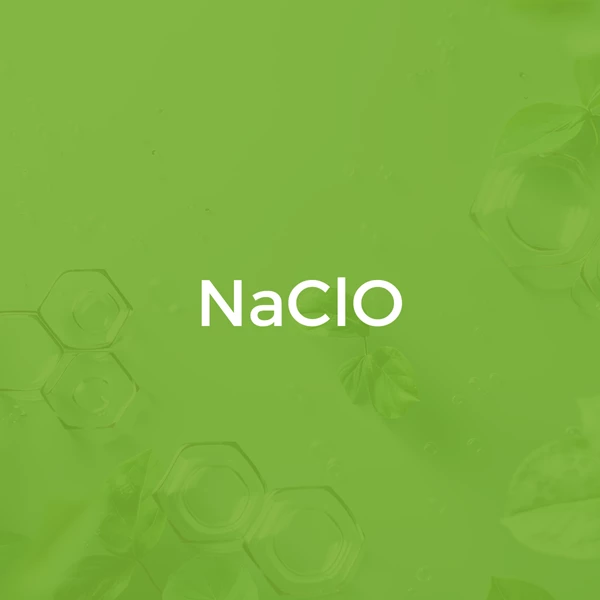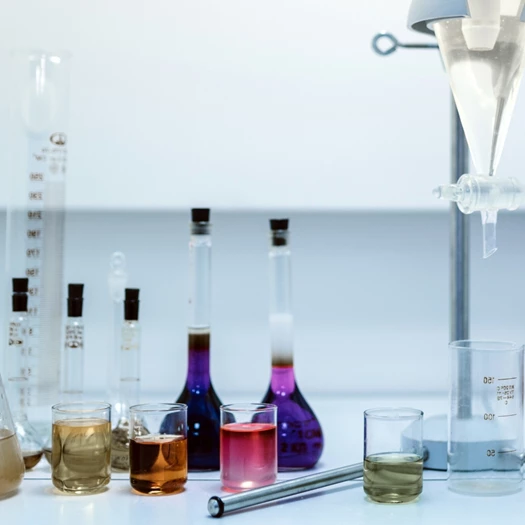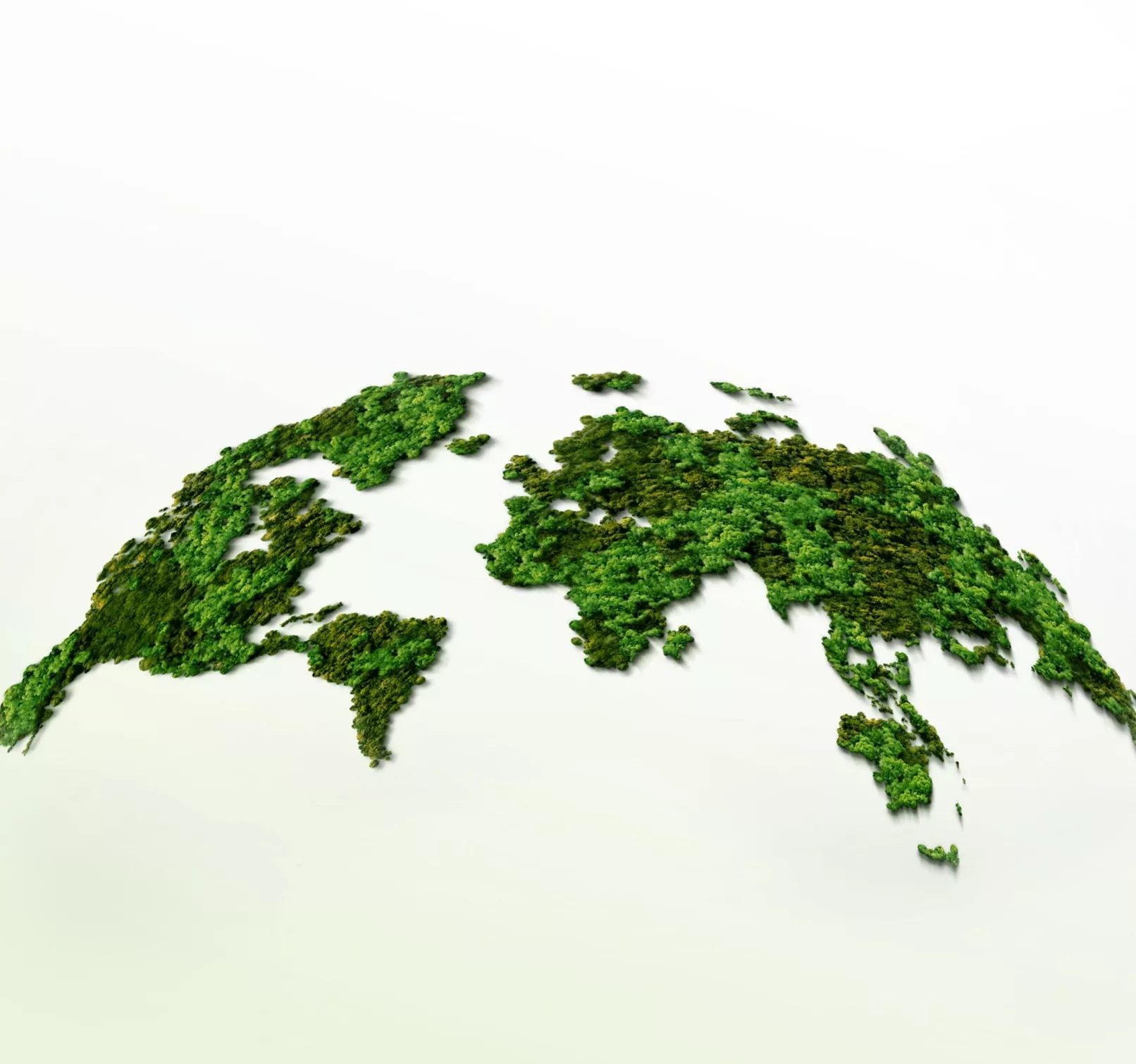
Sodium Hypochlorite
Sodium Oxychloride; Chloride of Soda
Key applications
Raw materials for the horticultural industry,
Raw materials for labolatories,
Raw materials for the food industry,
Raw materials for testile industry,
Raw materials for dairy processing,
Raw materials for household chemicals production,
Raw materials for paints and coatings production,
Raw materials for paper production,
Raw materials for glass and ceramics production,
Cosmetic raw materials
Contact us
directly:
QUICK QUOTE FORM
Physicochemical properties
Sodium Hypochlorite, also known as sodium chlorate(I) or sodium salt of hypochlorous acidis an inorganic chemical compound with strong oxidizing properties. Most commonly, sodium hypochlorite is found as a clear, light yellow liquid with a distinct, intense chlorine odor. The solution is highly alkaline, with a pH ranging from 11 to 13. Sodium hypochlorite is also a corrosive substance, particularly when it comes into contact with certain metals such as aluminum, copper, or brassIts corrosive action may also affect certain types of plastics, rubber, and coatings, especially under prolonged exposure or elevated temperatures. The sodium salt of hypochlorous acid decomposes when exposed to light, elevated temperatures, or contact with acids—releasing hazardous gases, primarily chlorine and chlorine oxides. For this reason, sodium hypochlorite must be stored in tightly sealed, opaque containers made of chemically resistant materials.


Sodium Hypochlorite in the Food Industry
Sodium hypochlorite plays an important role in food production facilities as a processing aid used in specific chemical processes. One of its key applications is in the modification of starch – both potato and corn starch – to produce oxidized starch (E1404). This functional food additive is used as a thickener, stabilizer, and emulsifier in a wide range of products, including soups, sauces, desserts, fruit and vegetable preserves, and ready meals.
Sodium hypochlorite is also used to rinse fresh fruits and vegetables before further processing or packaging. Thanks to its oxidizing properties, it effectively removes contaminants while helping to preserve the quality and freshness of the products.

Sodium Hypochlorite in the Pulp and Paper Industry
Sodium hypochlorite plays a vital role in the technological processes of the pulp and paper industry, especially during the preparation of cellulose pulp. It is primarily used as a bleaching agent, to achieve the desired level of brightness and purity in paper intermediates.
Bleaching with the sodium salt of hypochlorous acid enhances the aesthetic and durability, of the final paper product by reducing yellowing and improving fiber structure. The use of sodium hypochlorite also helps lower the consumption of other chemicals in the bleaching process, making it a cost-effective and technologically efficient solution.
Additionally, sodium chlorate(I) is involved in the conversion of cellulose into carboxymethyl cellulose (CMC) – a compound widely used as a thickener and emulsifier across various industries, including food, cosmetics, and chemicals. Its role in fiber oxidation enables the production of raw material with the desired rheological and quality properties.

Other Applications of Sodium Hypochlorite
Sodium hypochlorite also plays an important role in other technological processes that rely on its strong oxidizing and bleaching properties.
- In the textile industry, it is used as a bleaching agentfor preparing both natural and synthetic fabrics for further processing—such as dyeing or finishing. Its ability to break down organic impurities and brighten fibers helps improve the quality and appearance of the final textile product.
- In the chemical industry, sodium hypochlorite is widely used as a reactive medium in organic synthesis processes – particularly where controlled oxidation or chlorination of substrates is required. It is employed in the production of chemical intermediates, specialty additives, and in certain stages of pharmaceutical and cosmetic synthesis, where it acts as a cleaning agent or reaction initiator.
- In the production of paints and pigments, sodium chlorate(I) is involved in chemical processes that help achieve the desired properties of colorants – such as stability, color purity, and resistance to UV radiation.


Why it is worth cooperating with us?
Order quickly, efficiently, reduce risk.
The chemical raw materials you’re looking for are in our warehouses
Our own warehouses, fleet of trucks, and stable supply chain mean wide availability and fast order fulfillment
No worries about the quality of chemical raw materials
Concrete actions, not just words, confirm the quality of the materials we offer. It’s our implemented ISO system, HACCP and GMP+ certification, or the GMP+B4 fleet standard
Risk minimized to the minimum
We fully control the supply chain in Poland and worldwide. We have our own fleet of trucks, warehouses, customs warehouses, and a platform for container transport.
Convenient packaging with customization options
Bags, big bags, tanks, pallet containers, barrels, jerrycans, bottles... we tailor the packaging to your needs. We can also provide personalized labels for you.
Partnership at every stage
We respond to inquiries within a maximum of 30 minutes, assign a dedicated account manager, keep our promises, and focus on long-term cooperation.
bonded warehouses
years of experience
trading partners from all over the world
trucks
countries we cooperate with
warehouse area
